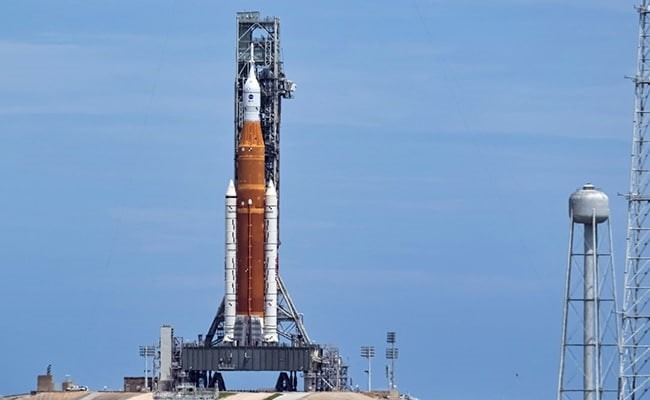| Translate This News In |
|---|
After postponing a second attempt to launch its new 30-story rocket because of a fuel leak on Friday, NASA declared on Saturday that it will not try again during its current window of opportunity, which closes early next week.
According to NASA, the next possible launch windows are September 19 to October 4 and then October 17 to 31.
Millions of people around the world and crowds gathered on Florida beaches had hoped to witness the historic launch of the Space Launch System (SLS), but a leak near the rocket’s base was discovered as ultra-cold liquid hydrogen was pumped in.
“Today’s Artemis I launch has been cancelled by the launch director,” NASA said in a statement. “Multiple troubleshooting efforts to address the leak’s location… did not resolve the issue.”
According to astronaut Victor Glover, the latest postponement “was the right decision after you develop this kind of leak.”
The first launch attempt on Monday was also cancelled after engineers discovered a fuel leak and a sensor indicated that one of the rocket’s four main engines was overheating.
– What about next month? –
The rocket will almost certainly have to be hauled back into its assembly building to undergo periodic certification tests.
NASA Administrator Bill Nelson announced shortly after Saturday’s aborted launch that the next attempt might not go off until mid-October since a crew will utilise the Kennedy Space Center to reach the International Space Station early in the following month.
Launch director Charlie Blackwell-Thompson gave the go-ahead to begin filling the rocket’s tanks with cryogenic fuel early in the morning.
The Artemis mission manager Mike Sarafin later described the issue as “not a manageable leak” as the three million litres of extremely cold liquid hydrogen and oxygen that were scheduled to be fed into the spacecraft immediately ran into difficulties.
The Artemis 1 mission’s goal is to ensure that the Orion capsule, which sits atop the SLS rocket, is safe to carry astronauts in the future.
Mannequins outfitted with sensors will act as stand-ins for astronauts on the mission, recording acceleration, vibration, and radiation levels.
– Apollo’s twin sister
After launch, the spacecraft will take several days to reach the Moon, flying around 60 miles (100 kilometres) at its closest approach.
The capsule will use its engines to reach a distant retrograde orbit (DRO) of 40,000 miles beyond the Moon, a record for a spacecraft designed to carry humans.
The journey is expected to last six weeks, with one of the main goals being to test the capsule’s heat shield, which is the largest ever built at 16 feet in diameter.
Artemis is named after Apollo’s twin sister, after whom the first Moon missions were named.
In contrast to the Apollo missions, which sent only white men to the Moon between 1969 and 1972, the Artemis missions will send the first person of colour and the first woman to the Moon.
After years of delays and cost overruns, a successful Artemis 1 mission would be a huge relief for NASA.
According to a government audit, the Artemis programme will cost $93 billion by 2025, with each of its first four missions costing a whopping $4.1 billion each.
Artemis 2, the next mission, will take astronauts to the Moon but will not land on its surface.
The crew of Artemis 3 is scheduled to land on the Moon in 2025, with subsequent missions aiming for a lunar space station and a long-term presence on the lunar surface.
A crewed trip to Mars aboard Orion, lasting several years, could be attempted by the end of the 2030s.


















